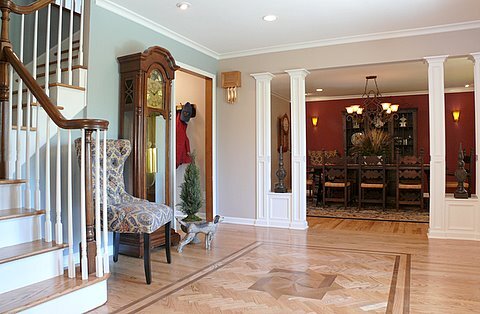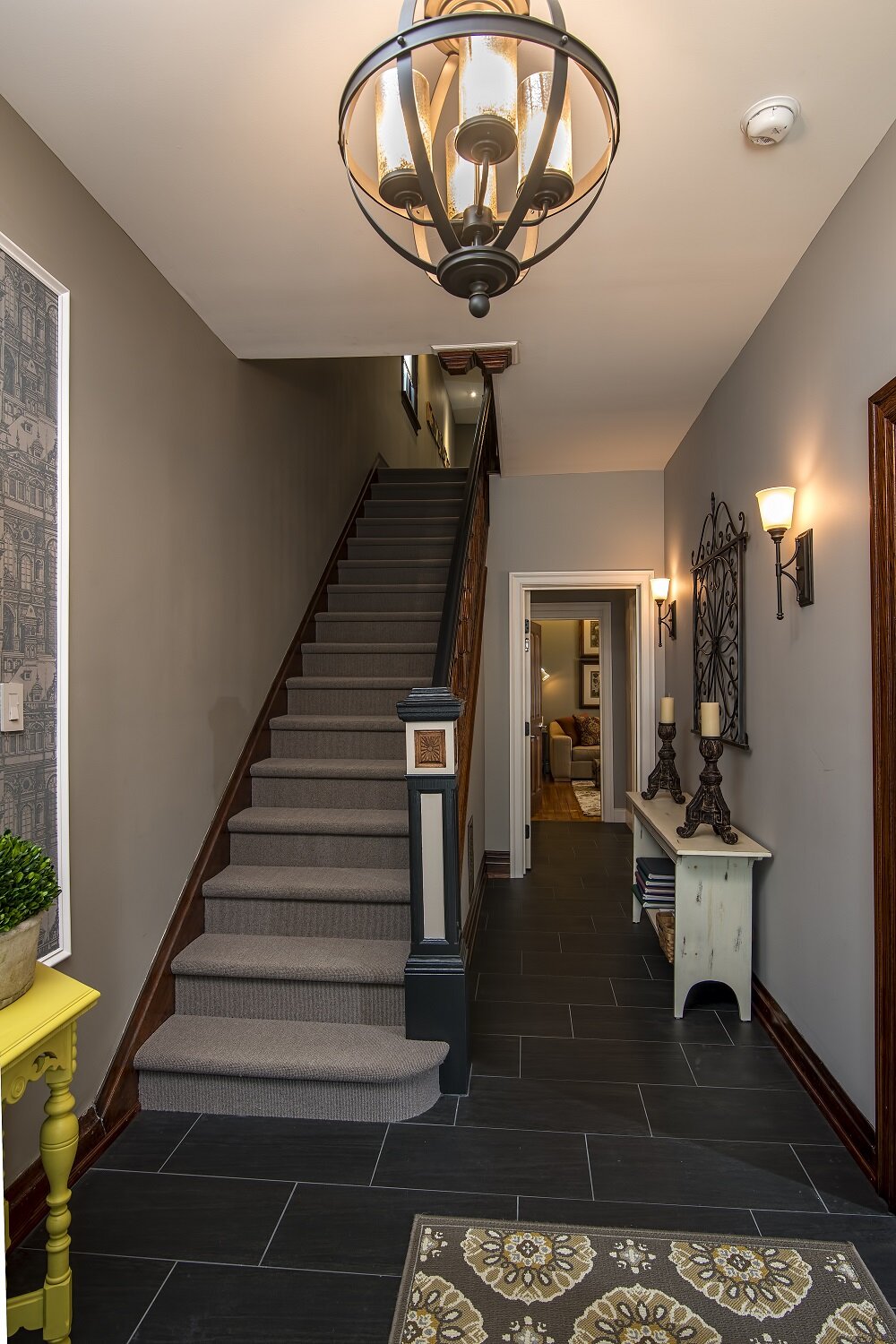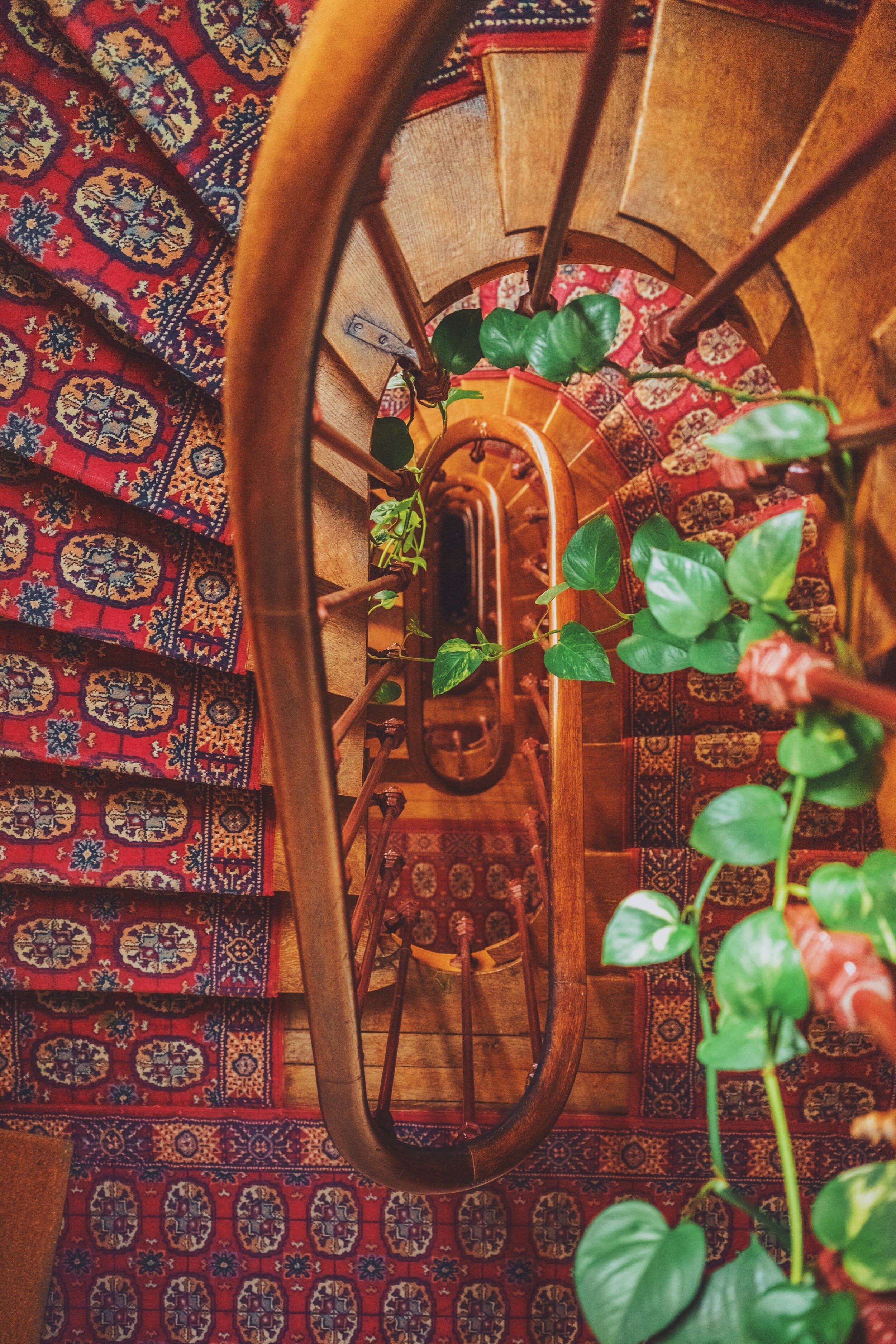Step it up! Choosing The Best Carpet For Stairs
Stairs are the most common place in the home to have carpet, and yet it can be the trickiest decision to make. Choosing carpet for the stairs can be a bit more difficult than choosing carpet for other areas of the home. This is because, in addition to having to decide on carpet style and color, the carpet has to be of appropriate durability and thickness to be installed on the stair. These points to ponder might help in your decision-making.
Style and Appearance
When it comes to carpet styles for stairs I find there are two distinct general categories; patterned and textured solids. If you are looking to make a dramatic statement with your stair carpeting a patterned runner or broadloom can do the trick. This can be considered a more traditional design aesthetic, but this pattern can also help in hiding normal wear and tear - thus extending the life of your carpeting. That’s why I still recommend a textured or tone-on-tone patterned carpet for my clients with a more modern design aesthetic. Another element of patterned versus solid is how your stairs flow into the upstairs hallways and bedrooms. There are really no steadfast rules, but a case by case decision as to when and where to end a patterned design.
Carpets Provide Safety for Stairs
Often the choice of whether or not you will carpet your stairs comes down to safety rather than aesthetics. Even if you prefer the look of hardwood, carpet on stairs is simply safer. I realize that some carpet can be considered just as slippery as a hard surface. But should a fall occur, carpet offers a much softer landing spot, which could help reduce the likelihood of injury. Still, I do have clients who choose bare wood over carpet on their stairs, but mostly for maintenance reasons.
Carpet Quality and Durability
It makes sense that stairs are often the most heavily traveled areas of your home. But did you know that the impact of foot traffic is greater on stairs than on flat areas due to the added force of gravity as you descend the stairs? This means that you should be using the highest quality carpet and cushion you can afford. While an upgraded carpet and pad will be an additional cost up front, they will most definitely save you money in the long run, as the carpet will need to be replaced less frequently. Surprisingly, my to-the-trade carpet resource only specifies a synthetic felt padding for their stair installations which is typically the same cost or lower than foam padding.
Durability Versus Thickness
Thickness is an important factor in the suitability of carpet for the stairs. Many people think that a thicker carpet is more durable, but this is not always the case. In fact, some of the most durable carpets have thinner profiles. I actually prefer to use a loop pile versus a cut pile on stairs because it tends to flatten less quickly. My favorite is a wool or wool-blend which offers the greatest resiliency. (Wool is the most innately resilient fiber.) But one of the simplest tricks is to take the carpet sample and bend it, mimicking wrapping the nose (front edge) of the stair tread - can you see through to the carpet backing? (It’s important to make sure you are bending it in the proper direction that it will be installed!) If the backing shows through you should consider selecting a better quality, thicker carpet.
Soil Resistance
There is a difference between staining and soiling. If you are choosing a carpet that will only cover your stairs (and not other areas such as the family room) stain resistance may not be a top priority, because the carpet is not likely to be subjected to many spills. However, you should still look for a carpet that has good soil resistance.
Installation of Carpet on Stairs
There are two methods of installing carpet on the stair: waterfall or French cap. The waterfall method involves simply bending the carpet over the edge of the stair and bringing it straight down to meet the tread of the next step. It is an easy and fast way to install the carpet, and for this reason, many new home builders use this method.
The French cap method wraps the carpet around the edge of the stair and tucks it under the lip, contouring to the shape of the step. This method may require more time and skill on the part of the installer but presents a tailored look which you may prefer.
Stringers
Stringers are the side supports for the stairs. If your stairs are closed in, the stringer will run along the wall at the same angle as the stairs. Should you cover this in carpet or paint it? In my opinion the answer comes down to the condition of the wood. If your stringers are not in good shape then carpeting may be a less costly alternative to replacement of the wood. (But keep in mind this can look dated.) If your stringers are in good condition paint them or stain them whenever possible.
Warranty Coverage
One thing that is important to note is that a lot of carpets don’t provide warranty coverage for stairs. Although it seems strange (after all, most houses and even some condos/apartments have stairs) historically, manufacturers excluded all stairs from the carpet’s warranty. In recent years, however, more carpets are being offered with a warranty on stairs. If you are concerned about having the protection a warranty can offer, then make sure that the carpet you choose for your stairs does in fact cover stairs under the warranty.
All these points are a lot to consider, for sure! But with careful planning and consideration you can find that perfect carpet for your stairs! As I always say - it’s about doing your homework!




